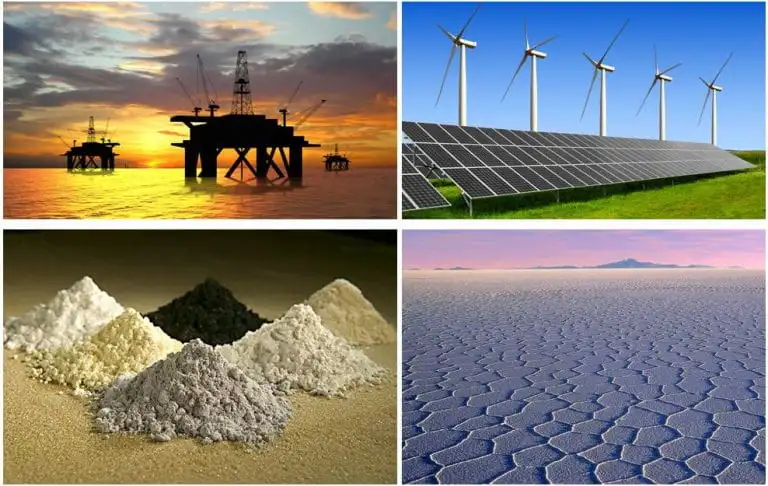
Overview of Energy Resources
In recent times, geologic knowledge has been important for positioning economically valuable materials for humanity’s use. All things we use in daily life come from only three sources: they are farmed, mined, or hunted and fished. At the start of the twentieth century, the assumption was widespread that food supplies would not be maintained with world demand, signifying the need to develop artificial fertilizers.
Sources from where fertilizer ingredients get are: nitrogen can get from the atmosphere, using the Haber process for the production of ammonia from hydrogen and atmospheric nitrogen; potassium comes from the hydrosphere, such as the ocean or lake evaporation; and phosphorus is mined from the geosphere, for example, minerals like apatite from phosphorite rock, which is found around the world. Thus, without the mining and processing of natural materials, modern development would not exist. Indeed, geologists have an important role in this process.
Mining
Mining is defined as taking out valuable materials from the Earth for community use. Usually, these comprise solid materials such as iron, gold, diamond, coal, gravel, and sand. Some are in the form of liquid materials such as, oil and natural gas. Modern mining has a long association with modern society. The oldest mine dates back around 40,000 years to the Lion Cavern in Swaziland where there is an indication of focused digging into the Earth for hematite, a significant iron ore used as a red dye. Resources taken out by mining are usually measured to be nonrenewable.
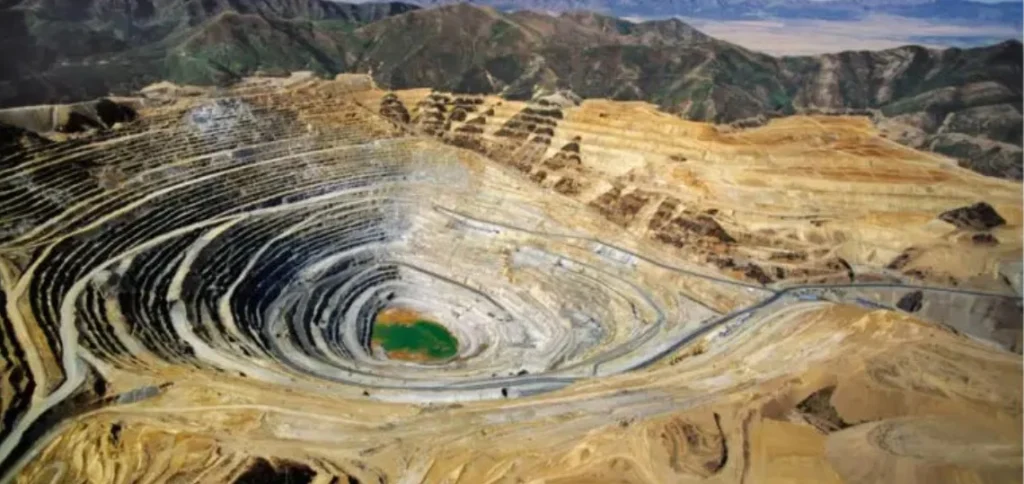
Renewable vs. Nonrenewable Resources
Renewable Resources
Resources usually come in two major classes such as renewable and nonrenewable resources. Renewable resources can be reused indefinitely, while nonrenewable resources do not replenish on a human timescale.
Renewable resources are constituents present in our environment that can be browbeaten and refilled. Some common renewable energy sources are associated with green energy sources. They are linked with relatively small or easily remediated environmental impacts.
Such as solar energy comes from the fusion process within the Sun, which emits electromagnetic energy. This energy reaches the Earth consistently and constantly and should continue to do so for approximately five billion more years.
Wind energy, also linked to solar energy, the oldest renewable energy and is used to navigate ships and power windmills. Both wind and solar-generated energy are adjustable on Earth’s surface. These restrictions are offset because we can use energy-storing instruments, for example, batteries or electricity exchanges between producing sites. The Earth’s heat, known as geothermal energy, can be feasible anywhere that geologists bore deep enough. Practically, geothermal energy is more useful where heat flow is countless. For example in volcanic zones or areas with a thinner crust.
Hydroelectric dams provide energy by letting water fall through the dam under gravity, which triggers turbines that produce the energy. Ocean tides are also a consistent energy source. All of these renewable resources make energy available that powers society. Other renewable resources are animal and plant material, which are used for food, clothing, and other supplies. These are researched as conceivable resources.
Nonrenewable resources
Nonrenewable resources cannot be refilled at a sustainable rate. They are limited within human time frames. Many nonrenewable resources come from tectonic, planetary, or long-term biological processes. For example gold, copper, lead, diamonds, sand, marble natural gas, oil, and coal.
Most nonrenewable resources include precise concentrated elements recorded on the periodic table; some are compounds of these elements. For example, if sources of iron are needed, geologists will search for iron-rich deposits that can be sparingly extracted.
Nonrenewable resources may be uninhibited when other materials become inexpensive or serve a better purpose. Due to lower environmental impact and cost of natural gas and oil, the use of coal has decreased globally. Economic struggle among nonrenewable resources is unstable use away from coal in many developed countries. https://thecliment.com/renewable-energy-sources-challenges-and-solutions/
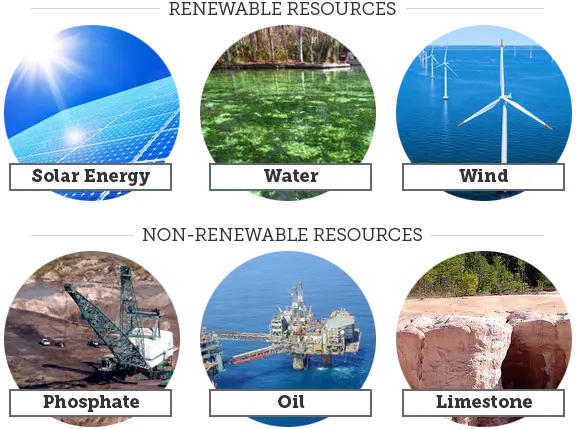
Ore as Energy Resource
Banded-iron creations are an important ore of iron (Fe). Earth’s materials include the elements in the periodic table. These elements are typically not concentrated enough for profitable material extraction and processing into products. Any place where important and valuable material is concentrated is a geochemical and geological anomaly.
An ore deposit is a source of material from which valuable substances can be profitably extracted. Characteristically, the term ore is used for only metal-containing minerals, but it can be functional for valuable nonrenewable resource concentrations such as fossil fuels, nonmetal deposits, building stones, and even groundwater. If a metal-bearing resource is not beneficial to mine, it is called a mineral deposit. The term natural resource is more easy to say than the term ore for non-metal-bearing materials.
It is understood that the technology for mining is available, financial conditions are suitable and social, political, and environmental deliberations are satisfied to classify a natural resource deposit as ore. It can either be concentrated in a vein or spread thinly as low-concentration ore, depending on the substance.
Some materials are mined directly from water bodies such as sylvite for potassium; which is extracted from water through desalination and from the atmosphere such as nitrogen for fertilizers. These differences lead to several methods of mining, and changes in terminology depending on the inevitability. Ore mineral resource is used as an indicator of ore that is possibly extractable, and the term ore mineral reserve is used for a well-defined proven, and profitable number of extractable ore.
Fossil Fuels as an Energy Resource
Fossil fuels are extractible sources of stored energy that were formed by ancient ecosystems. The natural resources that characteristically fall under this category are coal, petroleum, oil, and natural gas. These resources were initially formed by photosynthesis in living organisms such as plants, algae, phytoplankton, and cyanobacteria.
This energy is fossil solar energy subsequently the sun’s ancient energy was converted by ancient organisms into materials that conserved the chemical energy within the fossil fuel. As the energy that is used, just like photosynthetic respiration that occurs, carbon enters the atmosphere as CO2, causing climate change. Today societies use fossil fuels for most of the world’s energy.
Modern coral reefs and other highly productive thin marine environments are supposed to be the sources of most petroleum resources. Converting solar energy into hydrocarbon fossil fuels by living organisms is a complex process. When organisms die and decay, the stored chemical energy is suppressed within surrounding geologic materials.
All fossil fuels contain carbon that was produced in an early environment. In areas rich with organic matter such as coral reefs, swamps, and planktonic blooms, there is a higher potential for fossil fuels to gather. Indeed, there are some indications that over geologic time, fossil fuel made of organic hydrocarbon material was highly produced around the globe.
Lack of oxygen and reasonable temperatures in the environment seem to help conserve these organic substances. Also, the pressure and heat applied to organic material after it is buried subsidize transforming it into higher quality products. For example such as oil to gas and brown coal to anthracite. Heat and pressure can also cause moveable materials to migrate to circumstances suitable for mining. https://thecliment.com/?s=fossil+fuels
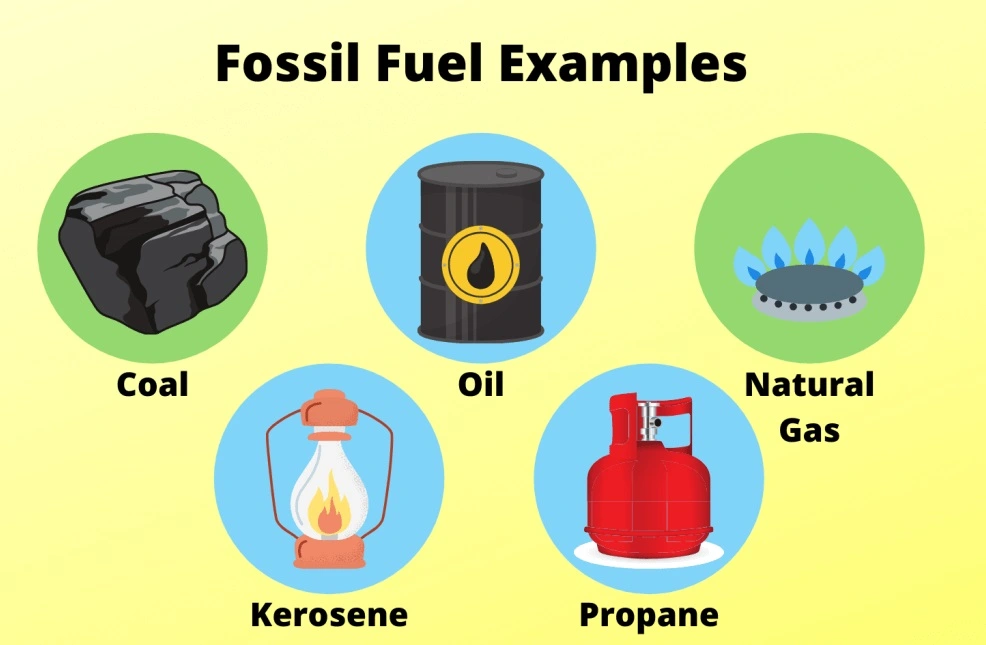
Coal as an Energy Resources
Coal comes from fossilized marshes, though some older coal deposits that predate terrestrial plants are supposed to come from algal accumulations. It is chiefly carbon, hydrogen, sulfur, oxygen, and nitrogen, with slight amounts of other elements. As plant material is combined into sediments, heat, and pressure cause numerous changes that concentrate the fixed carbon, which is the coal’s flammable portion. So, the more pressure and heat that coal undergoes, the greater its fuel value and carbon concentration, and the more required is the coal.
Peat also known as turf comprises partially decayed organic matter. Peat itself is an economic fuel in some areas of the world. As lithification happens, peat converts to lignite. With increasing pressure and heat, lignite turns into sub-bituminous coal, bituminous coal, and then, in a process like metamorphism, turns into anthracite. Anthracite is the highest metamorphic type and most demandable coal since it has the highest energy output. By subjecting anthracite to high pressure and heat, volatiles are removed, resulting in pure carbon that can transform into graphite.
As a fuel source, humans used coal for at least 6,000 years. As the world changeovers from fossil fuels such as coal, and manufacturing follows strong, flexible, and lighter materials than steel such as carbon fiber for many applications, recent research is discovering coal as a source of this carbon.
Mineral Resources
Mineral resources, which are principally called nonrenewable, are generally placed in two main categories: metallic, which contains metals, and nonmetallic, which contains other useful materials. Most mining has been conventionally focused on extracting metallic minerals. Human society is progressing significantly because we have developed the knowledge and technologies to produce metal from the Earth.
This knowledge has permitted humans to build the machines, monetary systems, and buildings that dominate the world today. Locating and getting these metals has been a key side of geological study since its inception. Every element in the periodic table has precise applications in human civilization. Mining of metallic minerals is the source of many of these elements.
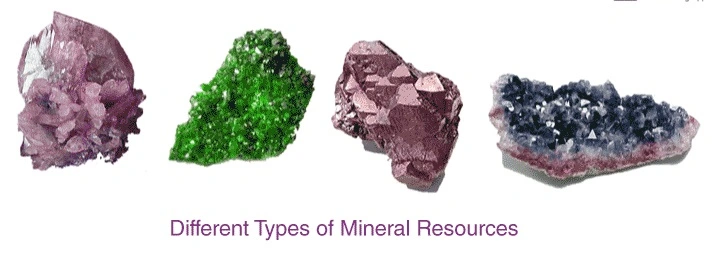
Environmental Impacts of Metallic Mineral Mining
The primary impact of Metallic mineral mining comes from the mining itself, including covering landscapes with tailings, disturbing the land surface, and increasing mass wasting by hastening erosion. Additionally, many metal deposits comprise pyrite, an invaluable sulfide mineral, that when thrown into waste dumps, generates acid rock drainage during weathering.
Sulfides such as pyrite react and undergo composite reactions to release metal ions and hydrogen ions, which cause the pH low to a highly acidic level in oxygenated water. Mining and processing of mined constituents typically increase the surface area-to-volume ratio in the material, triggering chemical reactions to happen even faster than would occur naturally. If not managed appropriately, these reactions cause acidic streams and groundwater trails that carry dissolved toxic metals.
In mines, limestone is a waste material, or where carbonate minerals such as calcite or dolomite are present, their acid-neutralizing capacities help reduce acid rock drainage. Although this is a natural process too, it is very important to separate tailings and mine dumps from oxygenated water, to avoid the sulfides from liquifying and subsequently infiltrating the sulfate-rich water into waterways. Industry has taken great steps to prevent contamination in recent decades, but older mining projects are still causing problems with local ecosystems.
Summary
Energy and mineral resources are important to modern society, and it is the part of the geologist to discover these resources for human benefit. As environmental problems have become more protruding, the value of the geologists has not decreased, as they are still energetic in locating the reservoirs and identifying the least invasive methods of extraction.
Energy resources are generally grouped as renewable or nonrenewable. Geologists can help in locating the best places to achieve renewable resources for example locating a dam, but are commonly tasked with discovering nonrenewable fossil fuels.
Mineral resources are grouped into two categories: metallic and nonmetallic. Minerals have a wide diversity of processes that focus on economic levels and are usually obtained by surface or underground mining methods.
Another detailed blog on Energy and Mineral Resources is available https://www.toppr.com/guides/geography/minerals-and-energy-resources/what-are-minerals-and-energy-resources/
 The Climent Respect your roots, Protect your planet
The Climent Respect your roots, Protect your planet

I have been browsing online more than three hours today,
yet I never found any interesting article like yours.
It is pretty worth enough for me. Personally, if all site
owners and bloggers made good content as you did, the web
will be a lot more useful than ever before.
Thank you for your kind words. That mean alot to me as a beginner.
I just could not go away your site before suggesting that I really enjoyed the standard info an individual supply for your guests?
Is going to be back ceaselessly to check up on new posts